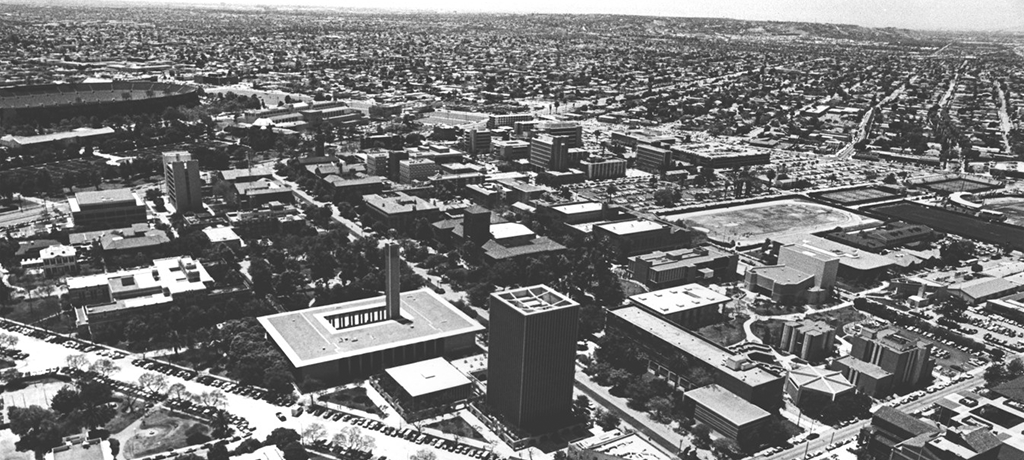
LA-USC History
The history of USC is intimately tied to that of the city of Los Angeles. When USC first opened its doors in 1880, Los Angeles was not much more than a rough-and-tumble frontier town. It lacked electricity, paved streets, telephones or a reliable fire alarm system. It still saw its share of Gold Rush drifters and ruffians, and lawlessness ruled. Not many held hope for the city’s future.
In the early 1870s, however, a group of civic-minded—and perhaps somewhat prophetic—men saw opportunity where others saw only sprawling tracts of land. In particular, Judge Robert Maclay Widney dreamed of establishing the region’s first university.
By 1879 Widney had formed a board of trustees. Three prominent members of the community—Ozro W. Childs, a Protestant horticulturist; former California governor John G. Downey, an Irish-Catholic pharmacist and businessman; and Isaias W. Hellman, a German-Jewish banker and philanthropist—donated 308 lots of land. The gift provided not only a place to build the campus, but provided a source of financial support for the nascent institution.
In 1880, the University of Southern California opened its doors to 53 students and 10 teachers. Since then, USC has become a top-ranked, world-class, private research institution. Its University Park and Health Sciences Campuses host nearly 40,000 students and nearly 3,200 full-time faculty—in the heart of one of the most diverse, dynamic metropolises in the world.









